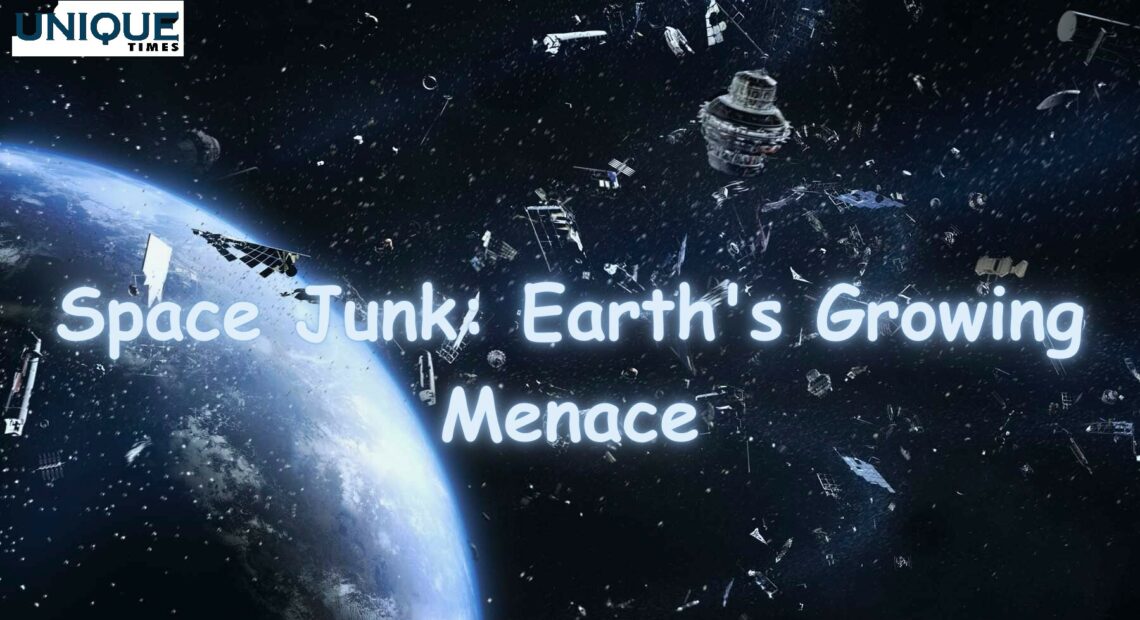Space Junk: A Looming Threat in Earth’s Orbit

In the vast expanse of space surrounding our planet, an alarming crisis is quietly unfolding—space junk. These discarded remnants of human exploration and satellite operations have amassed to over 500,000 pieces, posing a growing threat to both space missions and the safety of our planet. In this blog, we’ll delve into the world of space junk, exploring what it is, how it’s formed, and the potential consequences of this orbital clutter.
What is Space Junk?
Space junk, also known as orbital debris, encompasses a diverse array of defunct satellites, spent rocket stages, fragments from previous collisions, and even tiny paint flecks. These objects can range in size from a few millimeters to several meters across. Unlike celestial bodies, they orbit the Earth at incredibly high velocities, creating a hazardous environment for both crewed and uncrewed spacecraft.
The Origins of Space Junk
Understanding how space junk accumulates is crucial. The primary sources of space debris include:
- Satellite Breakups: Satellites eventually reach the end of their operational life. Some are purposely deorbited, while others remain in orbit, becoming potential sources of debris.
- Rocket Stage Discards: Rocket stages used to launch payloads into orbit are often abandoned once their fuel is expended. These spent stages can linger in orbit for years, adding to the debris population.
- Collision Debris: Collisions in space can shatter large objects into countless smaller fragments. The 2009 collision between the Iridium 33 and Cosmos 2251 satellites, for instance, created thousands of pieces of debris.
The Consequences of Space Junk
Space junk may seem like a distant problem, but its repercussions are significant and wide-ranging:
- Spacecraft Risk: Active satellites and crewed spacecraft must constantly maneuver to avoid collisions with space debris, consuming valuable fuel and potentially jeopardizing missions.
- Kessler Syndrome: Theoretical scenarios, like the Kessler Syndrome, describe a chain reaction of collisions generating even more debris, leading to a self-sustaining, uncontrollable increase in space junk.
- International Space Station Vulnerability: The International Space Station (ISS) faces a higher risk from space debris, necessitating regular adjustments to its orbit for the safety of its crew.
Mitigating the Space Junk Problem
Efforts to tackle the growing space junk crisis are underway:
- Deorbiting Strategies: Some spacecraft are designed with mechanisms to deorbit them at the end of their mission, reducing the risk of them becoming long-term debris.
- Active Debris Removal: Proposed missions aim to capture and deorbit defunct satellites and large pieces of debris, actively reducing the debris population.
- Space Traffic Management: Improved tracking and coordination of space objects help spacecraft avoid potential collisions.
Conclusion: A Shared Responsibility
The issue of space junk is a shared responsibility that demands international cooperation and innovative solutions. As we continue to explore and rely on space for communication, navigation, and scientific discovery, addressing this problem is crucial to safeguarding both our technological advancements and the sustainability of space itself. Space junk may be invisible from Earth’s surface, but its consequences are very real, reminding us of the importance of responsible space exploration and debris management.
Picture Courtesy: Google/images are subject to copyright








